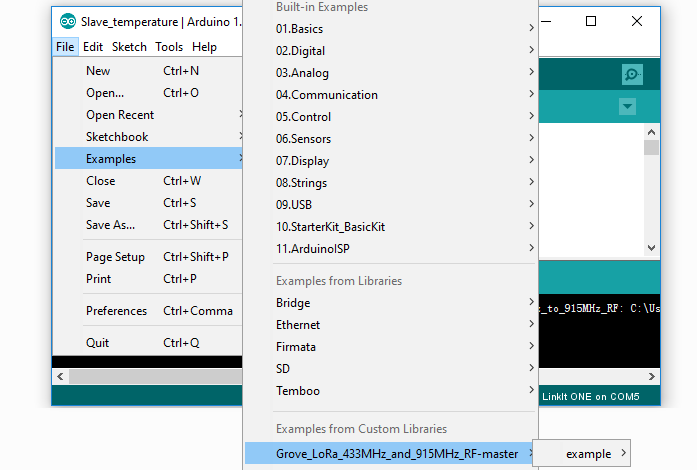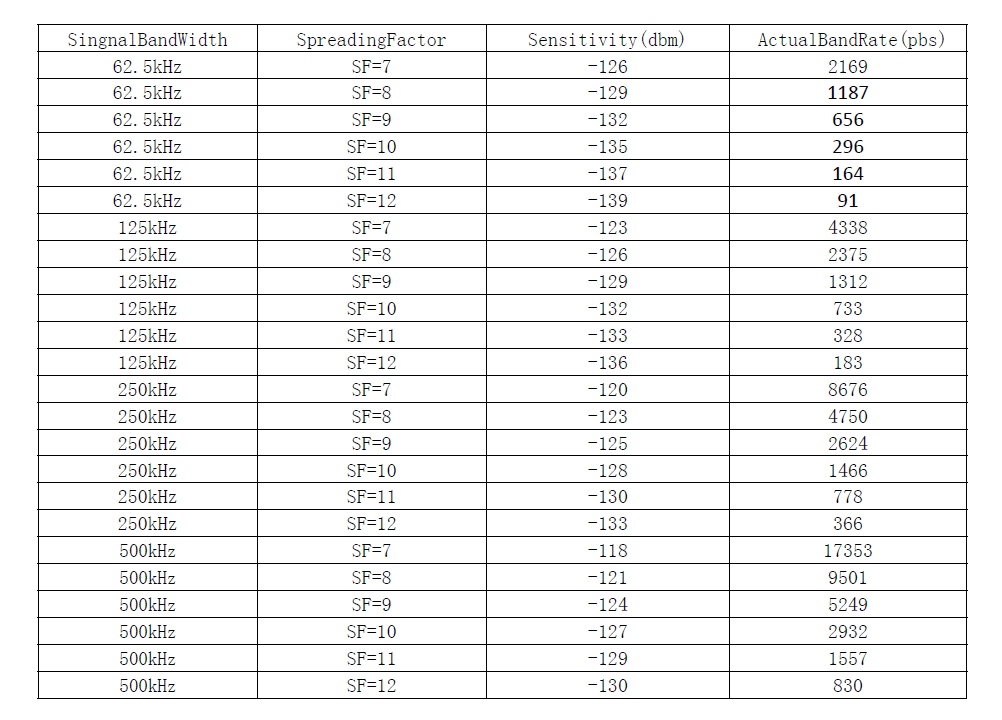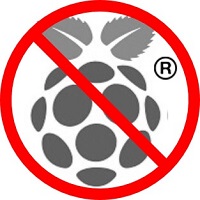Grove - LoRa Radio
Introduction

Grove is a very powerful platform developed by Seeed Studio to simplify your IoT projects.We have integrated the grove connector to most boards produced by Seeed to make them become a system. This time, we combined Grove with LoRa to provide an ultra-long-range wireless module for you.
The main functional module in Grove - LoRa Radio 433MHz is RFM98, which is a transceiver features the LoRa long range modem that provides ultra-long range spread spectrum communication and high interference immunity whilst mini-missing current consumption. The heart of Grove - LoRa Radio 433MHz is ATmega168, a widely used chip with very high-performance and low power consumption, especially suitable for this grove module.
There we already integrated a simple wire antenna to receive signal, if the signal is too weak to receive, don’t worry, the MHF connector next to the antenna is for adding a second antenna which has MHF interface to gain more signal.
This is the 433MHz version, which can be used for 433MHz communication. You can also find the version for 868MHz at Grove - LoRa Radio 868MHz.
| Version | Released Date | How to Buy |
|---|---|---|
| Grove - LoRa Radio 433 MHz | Dec 10, 2016 |  |
| Grove - LoRa Radio 868 MHz | Dec 10, 2016 |  |
Features
- Using RFM95 module based on SX1276 LoRa®
- Working Voltage:5V/3.3V
- ~28mA(Avg) @+20dBm continuous transmit
- ~8.4mA(Avg)@standby mode
- ~20mA(Avg) @receive mode, BW-500kHz
- Working Temperature:-20 – 70℃
- Interface:Grove - UART(RX,TX,VCC,GND)
- Simple wire antenna or MHF Connector for external high gain antenna
- Working Frequency:868MHz/433MHz
- +20dBm 100 mW Power Output Capability
- Size:20*40mm
- Rate:0.3kps~50kps
- Ready-to-go Arduino libraries
- Resered MHF antenna connector
Tip
More details about Grove modules please refer to Grove System
Platforms Supported
Hardware Overview

| PIN | NAME | FUNCTION |
|---|---|---|
| 1 | TX | TX of UART |
| 2 | RX | RX of UART |
| 3 | VCC | Power supply, 3.3V or 5V |
| 4 | GND | Connect Ground |
Application Ideas
- Internet of Things
- Smart Home
- Sensor Hub
- Long distance wireless communication
Getting Started
After this section, you can make Grove - LoRa Radio run with only few steps.
Preparations
Now we are making a demo for P2P(point to point) communication with the Grove - Lora Radio 433MHz, the Grove - LoRa Radio 868MHz is the same way to use.
Tip
Grove - LoRa Radio 433MHz can’t talk to Grove - LoRa Radio 868MHz.
| Item | Qty | Link |
|---|---|---|
| Seeeduino Lotus | 2 | GET ONE NOW! |
| Grove - LoRa Radio 433MHz | 2 | GET ONE NOW! |
| Micro USB Cable | 2 | GET ONE NOW! |
If this is your first time using Seeeduino Lotus, please refer to Seeeduino Lotus’s wiki.
Seeeduino Lotus is fully compatible with Arduino which works as simple as Arduino.
If this is your first time using Arduino, Please put hand on here to start your Arduino journey.
Connecting hardware
Seeeduino Lotus is a combination of Seeeduino and Base Shield. We can connect the LoRa Radio module to the D5 socket directly as the below picture shows.

Download Library
Click to download the library and install it (How to install an Arduino Library)
Open the example
Open your Arduino IDE, click File > Examples>Grove_LoRa_433MHz_and_915MHz_RF-master you will get many examples for the module.

| Node | Example Name | Function |
|---|---|---|
| Sender | rf95_client | Send “Hello World” every 1s |
| Receiver | rf95_server | Receive data and print it |
Click Tools>Board to choose “Seeeduino Lotus” and select respective serial port then click on Upload button to finish the steps.
Tip
If you’re using Grove - LoRa Radio 868MHz module change the following code.
//rf95.setFrequency(434.0);
rf95.setFrequency(868.0);
Review Results
After upload completed, you can open the serial monitor to see the result.

Data Rate
The below chart shows the relationships between the band rate signal band width spreding factor and sensitivity.

Resources
-
Schematics
-
Datasheet
-
References
-
Library
| Arduino | Wio | BeagleBone | Raspberry Pi | LinkIt ONE |
|---|---|---|---|---|
 |
 |
 |
 |
 |
Caution
The platforms mentioned above as supported is/are an indication of the module's hardware or theoritical compatibility. We only provide software library or code examples for Arduino platform in most cases. It is not possible to provide software library / demo code for all possible MCU platforms. Hence, users have to write their own software library.
Help us make it better
Welcome to the new documentation system of Seeed Studio. We have made a lot of progress comparing to the old wiki system and will continue to improve it to make it more user friendly and helpful. The improvement can't be done without your kindly feedback. If you have any suggestions or findings, you are most welcome to submit the amended version as our contributor via Github or give us suggestions in the survey below, it would be more appreciated if you could leave your email so that we can reply to you. Happy Hacking!

